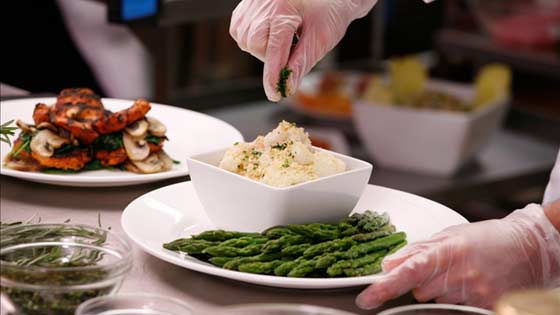10 Banned Food Ingredients That Are Still Allowed in The USA

Ever since Upton Sinclair wrote The Jungle, Americans have been paying attention to what is in their food and avoiding unsavory ingredients. Sinclair published his book detailing horrors in the meat packing industry February 1906, and the United States Food and Drug Administration (FDA) was formed to regulate these industries four months later, in June 1906.
While the FDA makes sure things like ground human fingers no longer wind up in your ground beef accidentally, and generally ensures food safety, there are numerous ingredients commonly used in processed food in the United States that receive FDA approval, but other countries ban. Below are ten examples of this:
- Olestra/Olean
Dubbed one the worst inventions of all time by Time magazine, this ingredient, a fat substitute found in fat free potato chips and the like, causes gas, cramping and uncontrollable diarrhea. Additionally, it may hinder the digestive tract’s ability to absorb nutrients, and products containing Olestra are required to add vitamins to compensate for this effect. It is banned in the United Kingdom and Canada.
- Genetically Modified Corn and Soy
Pigs fed GMO corn and soy showed a higher instance of uterine enlargement and stomach inflammation than those who were not, according to a 2013 study. Many Americans favor labeling foods that contain genetically-modified organisms, but current law does not require this, making it difficult if not impossible to distinguish those foods that contain GMOs and those that do not. GMO corn and soy are banned in Algeria, France and Greece.
- Potassium Bromate
This ingredient, used in breads to strengthen dough and reduce baking time, increased thyroid, kidney and other cancers in rats and mice, according to Japanese researchers. It is banned in Brazil, Canada, China, the European Union, Nigeria, Peru and South Korea
- Azodicarbonamide
Another ingredient found in breads, especially fast food hamburger buns, Azodicarbonamide can increase rates of asthma and allergies. It is banned in Australia, the United Kingom and some European Union countries. In Singapore, use of this ingredient can result in a 15-year prison sentence and a $500,000 fine.
- Butylated Hydroxyanisole (BHA) and Butylated Hyrdoxytoluene (BHT)
These preservatives are linked to increased cancer rates in animals, according to the United States Toxicology Program. BHT and BHA are commonly found in cereal, chewing gum, chips and sausages, but are banned in Australia, Canada, the European Union, New Zealand and Japan.
- Recombinant Bovine Growth Hormone (rBGH)
Some dairy farmers use this synthetic hormone to boost milk production in cows. The American Cancer Society has said cows fed rBGH are more prone to mastitis, or udder infections, and so are fed an increased amount of antibiotics, possibly leading to antibiotic-resistant bacteria. It is banned in Canada and the European Union.
- Blue Dye #1
Found in liquors, cereal, food coloring, frosting, soups and canned vegetables, some studies link this ingredient to hyperactivity, aggressiveness and irritability, attention problems and allergies in children. It is banned in Austria, Belgium, Denmark, France, Germany, Greece, Italy, Spain, Sweden, and Switzerland.
- Tartrazine/Yellow Dye #5
Commonly found in cereal, cheese-flavored crackers and pastas, puddings and sports drinks, studies link this dye to an increase in cell deterioration and mutation at a genetic level. Tartrazine is banned in Finland and Norway.
- Yellow #6
Also a popular coloring agent in cheese-flavored products, as well as cereal, it can cause adrenal and kidney tumors in animals. This ingredient is also banned in Finland and Norway.
- Brominated Vegetable Oil (BVO)
This ingredient is also used to make carpet flame retardant, as well as pool cleaner. Often found in sports drinks and bread products, BVO is shown in some studies to accumulate in the body, and may cause memory problems. It is banned in Europe and Japan, and Coca Cola and Pepsi both announced earlier this year they will be dropping this ingredient from their beverages.
__________________________________________________________________________-
Sources:
http://www.livestrong.com/slideshow/1007800-11-banned-food-ingredients-still-allowed-us/#slide=2
Personally it's a hell of a lot easier not to eat this crap if you go vegan. Your already naturally avoiding a great deal of this poison in your life if you go vegan.
Amazing post.
The sad thing is all this garbage is so abundant in foods.
Yellow #6, Blue Dye #1 and Tartrazine/Yellow Dye #5 is in nearly all conventional gum.
Genetically Modified Corn and Soy is the huge one. Its everywhere.
Best way to avoid this by far is not to buy processed foods.